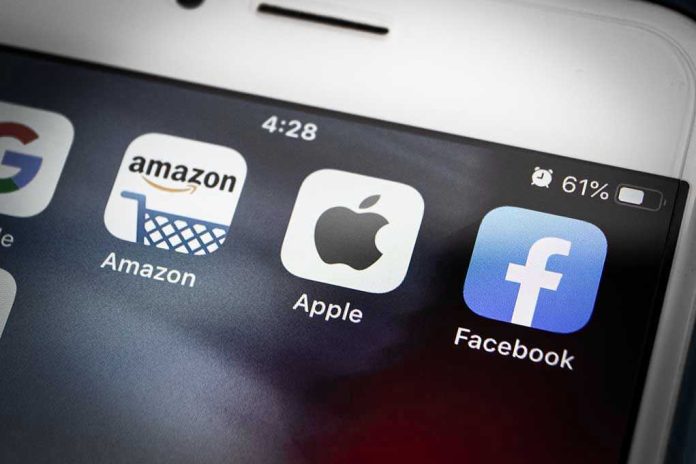
Amazon Prime Day 2025’s sales crash is shaking the e-commerce world, exposing just how fragile consumer confidence has become in a nation battered by inflation, recession fears, and economic mismanagement.
At a Glance
- Prime Day 2025 sales plunged 41% for key sellers compared to last year’s opening day, according to Momentum Commerce.
- Despite Amazon’s four-day event expansion, shoppers are cautious, spending less and hunting for deeper discounts amid inflation and economic uncertainty.
- Amazon disputes negative numbers, while industry-wide online sales still show growth—masking deeper problems for the retail giant.
- Record competition from Walmart, Target, and others is bleeding away Amazon’s dominance and fragmenting consumer attention.
Prime Day’s Four-Day Flop: Americans Slam the Brakes on Spending
Amazon’s much-hyped Prime Day 2025 was supposed to be a blockbuster, a four-day shopping marathon engineered to squeeze every last penny from American households already stretched thin. Yet the numbers tell another story: a stunning 41% drop in sales for major brands compared to last year’s opening day, reported by Momentum Commerce. Amazon leadership, desperate to save face, quickly dismissed these stats, insisting they only cover a “fraction” of sellers. But when the cheerleaders start arguing about who’s losing less, you know the party’s over.
Economic anxiety is the main act. Inflation has ravaged family budgets for years, eroding savings and pushing people to hang onto cash like it’s the last life raft on a sinking ship. Adobe Analytics, always ready to paint a rosy picture, projects a record $23.8 billion in online spending across all retailers during the Prime Day window. But that’s not Amazon-specific—nor is it adjusted for inflation. In plain English: Americans may be spending more dollars, but they’re getting less for each one, and Amazon is no longer the only game in town.
Inflation, Tariffs, and Recession Fears: The Real Drivers
Prime Day’s struggles are just a symptom of a much deeper disease. The past several years of government overspending and endless money-printing have set off an inflationary firestorm, leaving consumers shell-shocked and hyper-cautious. Tariffs and supply chain chaos have sellers slashing prices just to move inventory, while many others hold back, unwilling to sacrifice what little margin remains. The result? A retail environment defined by fear, hesitation, and a laser-focus on necessity rather than impulse buys.
Even the “discounts” aren’t moving the needle like they used to. According to Numerator, the average Prime Day order clocked in at just $58.37, with households averaging $106 in spending as of July 8. That’s hardly the tidal wave of consumerism Amazon was banking on when it stretched Prime Day from two to four days. The extension, led by CEO Andy Jassy and overseen by Jeff Bezos, now looks less like a masterstroke and more like a desperate Hail Mary in a game Amazon is rapidly losing.
Competition Heats Up, Amazon’s Grip Loosens
Walmart, Target, Macy’s, and every other major retailer saw the writing on the wall and launched their own parallel sales. The result? Consumer attention and spending have never been so fragmented. Amazon’s marketplace, once a fortress, is now just another outpost in a retail war that’s bleeding everyone dry. Industry analysts are warning that if Prime Day’s weak sales trend continues, it’ll be a “hard-to-swallow harbinger” for the crucial holiday season ahead.
It’s not just about missed sales targets; it’s about a shift in American psyche. The days of mindless spending sprees are over—at least until Washington gets its act together, stops mortgaging our children’s future, and puts the brakes on reckless policies that drive inflation and erode the value of hard work. Amazon’s stumble is a wake-up call, not just for the retail sector but for anyone who still believes you can print prosperity out of thin air.
Retail’s Reckoning: What Happens Next?
Amazon sellers—especially small businesses who make up 60% of marketplace sales—are feeling the squeeze most acutely. The risk of unsold inventory and compressed margins becomes existential when traffic dries up. Meanwhile, the big-box competitors are circling like sharks, happy to pick off disillusioned Prime members with their own aggressive promotions. For consumers, the silver lining is more choice and better deals—but only because retailers are desperate to pry open wallets that have been welded shut by economic reality.
Amazon’s official results aren’t due until July 12, but no amount of corporate spin will change the facts on the ground. Cautious shoppers, a battered middle class, and a retail landscape that no longer bends to Amazon’s will: these are the new realities. The outcome of Prime Day 2025 will ripple through the rest of the year, shaping strategies for Black Friday, Cyber Monday, and the all-important holiday season. If America’s largest retailer can’t move the needle, it’s a glaring indictment of the policies and priorities that got us here.
Sources:
Fortune: Amazon Prime Day 2025: Tariffs, AI, Deals, Sellers
WTOP: Customers Seeking Deals Gave Amazon’s Prime Day and Competing Sales a Solid Start
PYMNTS: Momentum Commerce Says Amazon Prime Day Sales Down 14% in First 4 Hours
Digital Commerce 360: Amazon Prime Day 2025 Sales Projection Equivalent to Two Black Fridays









